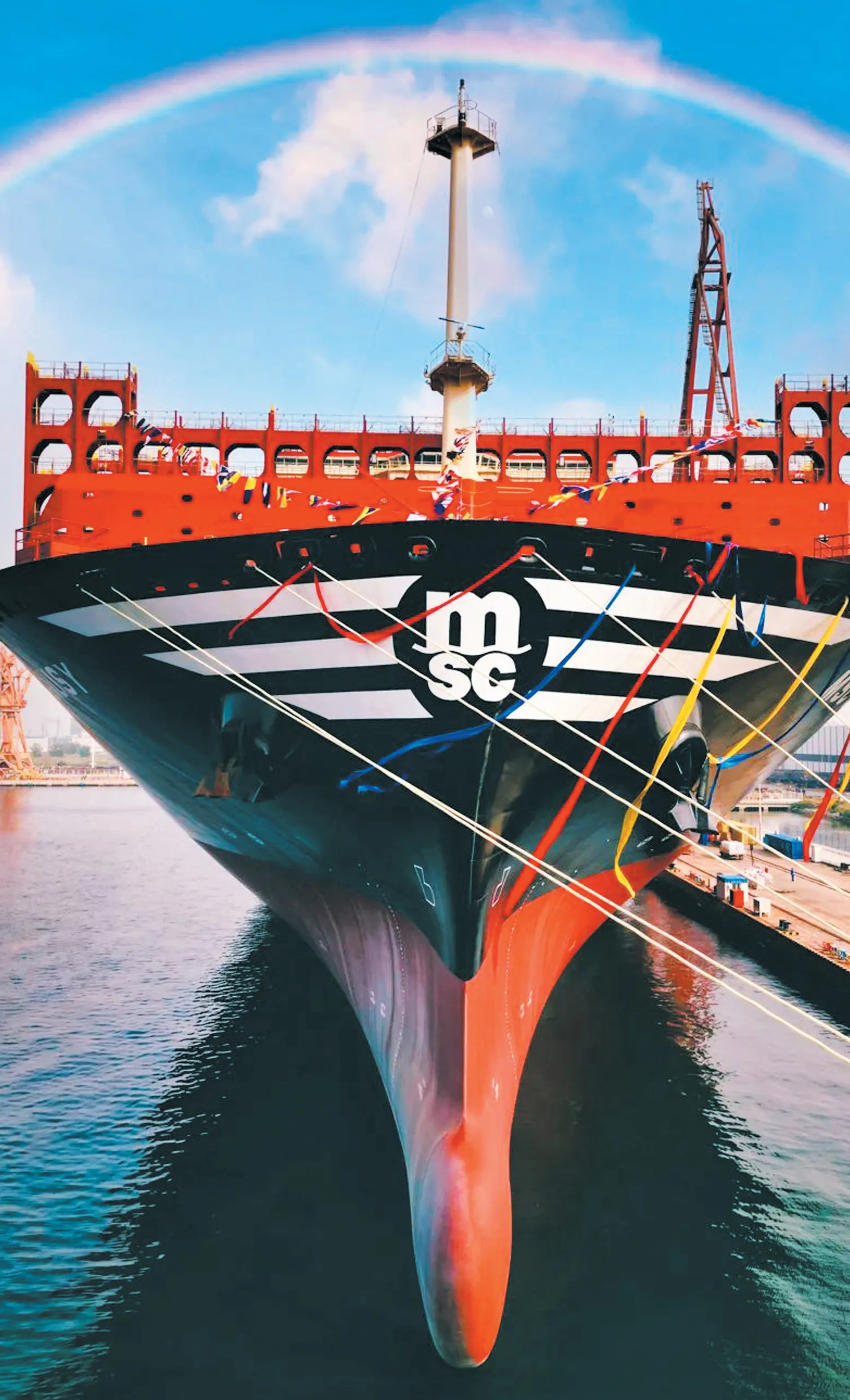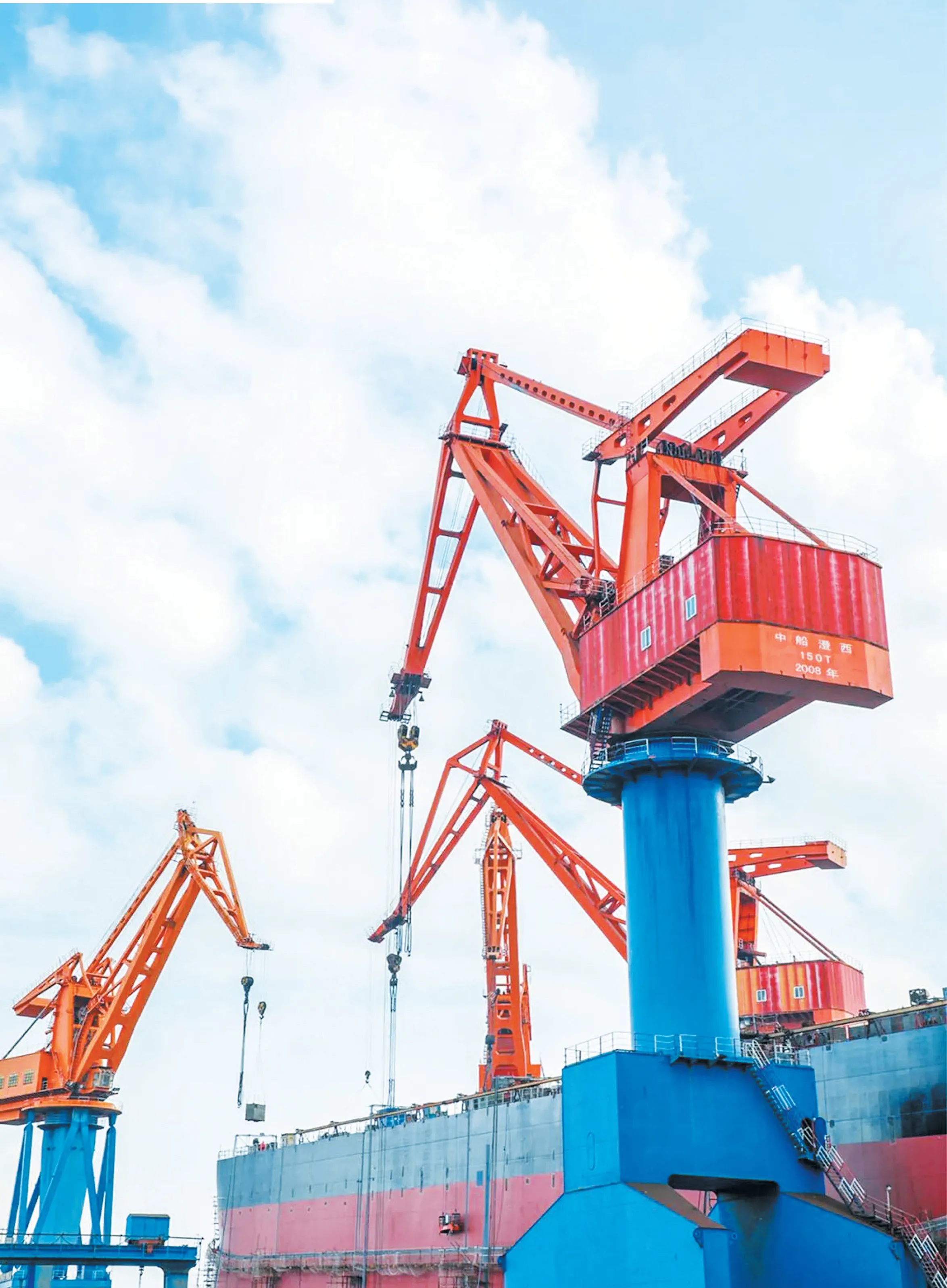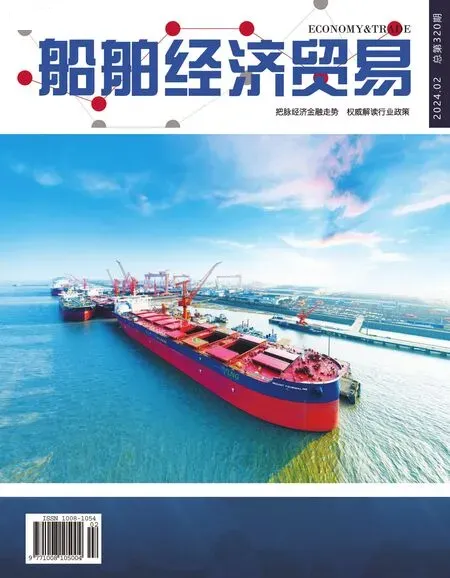CSSC GSI Leads the Race for Green Shipbuilding
Kuang Zhanting

On January 14, at the Second China Industrial Carbon Peaking Forum, CSSC Guangzhou Shipyard International (GSI) was awarded the title of "2023 China Industrial Carbon Peaking Leader Enterprise".Previously, GSI had successively obtained the "Industrial Product Green Design Demonstration Enterprise","Green Factory", "Green Supply Chain Management Enterprise" titles awrded by the Ministry of Industry and Information Technology, collected national green certification for the whole process from the ship design,construction and supply chain management, is the only shipyard gathering all three "green" titles, as well as the shipyard with the most national green certifications.
The whole life cycle of green"color" of ships coming out of this national green factory remains excellent.
Green ship: a green and efficient operation process
The construction and delivery of high-end green ships not only plays a positive role in promoting the green development and transformation and upgrading of GSI, but also helps the green transformation of the global shipping industry, providing strong equipment support for the adjustment of the capacity structure of ship owners.
In 2023, GSI not only delivered a record number of ships, but also delivered a record proportion of green ships. In the four luxury passenger ro/ro ships delivered by GSI last year, two world's largest tonnage of 2500passenger / 3800m lane luxury passenger ro/ro ships reserved LNG propulsion function interface, two 1500passenger / 3658m lane luxury passenger ro/ro ships adopted electric hybrid propulsion, battery loading capacity hit 8.8 MW, a reduction of 40% carbon emissions compared with the same type of ship operating on the same route.
The first 7000CEU LNG dualfuel PCTC project in South China completed the delivery of the first ship and No.2 ship in 2023, and recently delivered No.3 ship. The production cycle continued to break through, and the metronomic construction of dualfuel powered PCTC was achieved.At present, GSI has held 28 PCTCs orders, including 6 of the world's largest 10,800CEU PCTCs, with the first place in the world, and all of them are green ships powered by dual fuel.
In terms of three main ship types,GSI completed and delivered in 2023 eight LNG dual fuel LR II product tankers, two domestic first 49900 ton methanol dual fuel chemicals / product tankers, three South China’s largest 16000 TEU container ships with LNG propulsion function interface ready, equipped with desulfurization and denitrification system, air drag reduction system and PTO, meeting the latest environmental emission standards.

At present, GSI green products account for more than 60%. The construction and delivery of highend green ships not only plays a positive role in promoting the green development and transformation and upgrading of GSI, but also helps the green transformation of the global shipping industry, providing strong equipment support for the adjustment of the capacity and structure of ship owners.
Green manufacturing:the green transformation of the whole industrial chain
GS Ihastakeng reenmanu facturingas the core competitiveness of its sustainable development, constantly improved its carbon management level, and created the carbon peaking mode of"three changes and one building" of"changing the proportion of green electricity, changing the operation and maintenance mode, changing the energy structure and building the green system".
With the deepening of green and low-carbon concept in all walks of life,China's requirements for green and low-carbon industrial development have moved from the energy side to the manufacturing side, and continued to extend to raw materials, two rounds of equipment supply, etc., to the whole life cycle.
Aiming to build green development highland, GSI has coperated with CSSC 714 Institute,Jinan university and other carbon emissions research professional teams to take the green manufacturing as the core competitiveness of the sustainable development of the enterprise, improve their carbon management level, create the the carbon peaking mode of "three changes and one building" of "changing the proportion of green electricity, changing the operation and maintenance mode,changing the energy structure and building the green system".

GSI has practiced the carbon peaking action, and raised the "dual carbon" goal to the corporate strategic height. By optimizing the energy mix,reducing the fuel consumption of single ship sea trial and wharf fuel consumption, it has promoted the construction of photovoltaic power stations, and achieved PV power generation of more than 13 million KWh per year, and reduced fuel oil carbon emissions by more than 6,000 tons per year. Through the construction of resource integration platform and intelligent air compressor station,it has continuously improved the intelligent level of carbon emission management. With the most important spraying and cutting in shipbuilding as "bull’s eye", GSI cooperated with scientific research forces inside and outside CSSC to carry out technological innovation, took the lead in developing large packaging green spraying system,carried out demonstration research on pentane cutting technology, reduced the hazardous waste by 150 tons per year, reduced carbon emissions by more than 1,000 tons. At the same time, GSI also extended the concept of green manufacturing to subsidiaries and supply chains. The company has applied its own management methods and management experience to the development of Guangzhou Wenchong Dockyard (GWD), a subordinate ship repair enterprise, built a green factory model suitable for the characteristics of the ship repair industry, broke through the bottleneck of green development in the industry, and was successfully awarded the national "Green Factory"in 2023.
In terms of green supply chain management, GSI and Jinan University jointly built the first "Guangdong Marine Carbon Emission Accounting Demonstration Base" in Guangdong,and actively carried out carbon footprint accounting in the whole life cycle for the company's mainstream products. In the past four years, GSI has achieved a reduction in carbon emission intensity by 49%, generated 35 million KWh from renewable energy, and reduced carbon emissions by more than 300,000 tons.

